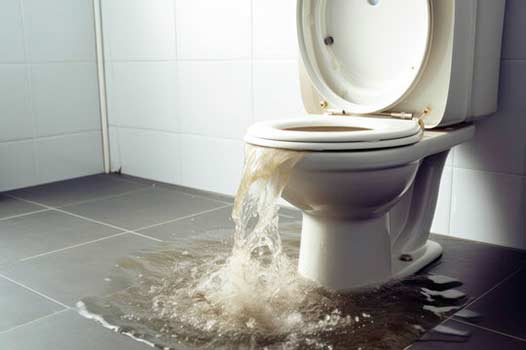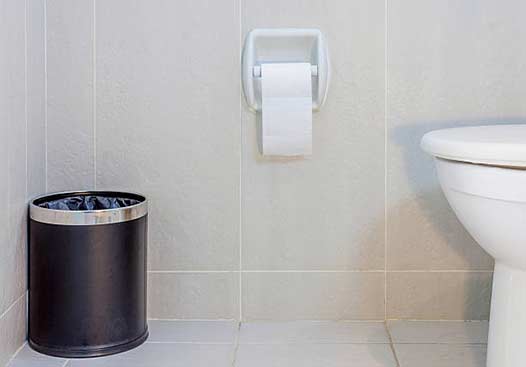
Dealing with a toilet that is overflowing can be a stressful situation. Not only is it messy and unpleasant, but it can also cause damage to your bathroom and potentially lead to water damage in your home. Knowing how to stop a toilet from overflowing and taking immediate action can help prevent further damage. Below we will discuss the common causes of toilet overflow and provide step-by-step instructions on how to stop it.
Understanding the Causes
Before we dive into the solutions, it’s essential to understand the common causes of toilet overflow. By identifying the root cause, you can better address the issue and prevent it from happening in the future.
- Clogged Toilet: The most common reason for a toilet overflow is a clog. When waste and toilet paper accumulate in the pipes, it can cause a blockage that prevents the water from draining properly. As a result, the bowl may overflow when flushed.
- Malfunctioning Float: The float is a device inside the toilet tank that regulates the water level. If it is not functioning correctly, it may allow the tank to fill excessively, leading to an overflow.
- Sewer Line Issues: Another possible cause of a toilet overflow is a problem with the main sewer line. If the sewer line is blocked or damaged, it can cause water to back up into your toilet and overflow.
Steps to Stop a Toilet From Overflowing
Now that we have a better understanding of the causes, let’s explore the step-by-step process to stop a toilet from overflowing. Following these instructions can help mitigate the issue quickly and effectively.
Step 1: Turn Off the Water Supply
The first step is to prevent more water from entering the toilet bowl. Locate the water supply valve behind the toilet or beneath the tank. Turn the valve clockwise to shut off the water supply. This will help minimize the amount of water that can overflow.
Step 2: Remove the Tank Lid
Next, remove the lid from the toilet tank. You may need to lift it straight up or unscrew it, depending on the type of toilet you have. Set the lid aside in a safe place to avoid any accidental damage.
Step 3: Check the Float
Inspect the float inside the toilet tank. Ensure that it is functioning correctly and not sticking in the upward position. Gently press the float down to see if it moves freely. If it is faulty or stuck, it may need to be adjusted or replaced. Calling a plumber nearby might be necessary to fix this issue.
Step 4: Clear the Clog
If you suspect that a clog is causing the overflow, you’ll need to clear it. There are a few methods you can try to remove the blockage:
- Plunger: Use a toilet plunger to create suction and dislodge the clog. Place the plunger over the drain hole and push down firmly. Then, vigorously pump the plunger up and down to create suction. Repeat this process several times until the water starts to drain.
- Plumbing Snake: If the plunger fails to clear the clog, you can try using a plumbing snake. Insert the snake into the toilet drain and twist it while pushing it forward. This can help break up and remove the obstruction.
- Enzyme-based Cleaner: Alternatively, you may use an enzyme-based cleaner specifically designed for clearing toilet clogs. Follow the instructions on the product for the best results.
Step 5: Clean Up the Excess Water
If the toilet has overflowed, it’s crucial to clean up the excess water promptly. Use towels or a mop to soak up the water from the floor. Wearing protective gloves is recommended to avoid any potential contact with bacteria.
Step 6: Test the Toilet
After the water is cleaned up and any clogs are cleared, turn the water supply back on by turning the valve counterclockwise. Allow the tank to refill, and then flush the toilet to test if the issue has been resolved. If the toilet flushes normally without overflowing, you have successfully stopped the overflow.

Provide a garbage bin in your bathroom for disposing of non-flushable items properly.
Preventing Toilet Overflows
While it’s essential to know how to stop a toilet from overflowing, taking preventative measures can help avoid such situations altogether. Here are some tips to prevent future toilet overflows:
- Watch What You Flush: Only flush toilet paper and waste down the toilet. Avoid flushing items such as facial tissues, wet wipes, or feminine hygiene products, as they can easily cause clogs.
- Maintain the Plumbing: Regularly inspect and maintain your plumbing system. Address any leaks, clogs, or malfunctioning components promptly to prevent major issues.
- Use a Garbage Bin: Provide a garbage bin in your bathroom for disposing of non-flushable items properly.
- Teach Proper Toilet Usage: Educate your household members, especially children, on the proper use of toilets. Teach them not to flush excessive amounts of toilet paper or other items that can cause clogs.
In Summary
Dealing with a toilet overflow can be a frustrating experience, but by following the steps outlined in this article, you can effectively stop the overflow and prevent further damage. Remember, the key is to act quickly to minimize water damage and attend to any issues that may have caused the overflow. By understanding the common causes and taking preventative measures, you can maintain a functioning and trouble-free toilet system in your home.